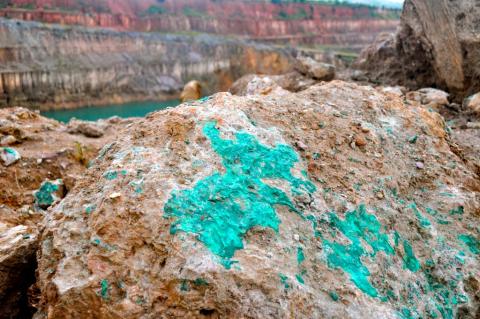
The EITI – what does it have to do with my life?
The EITI – what does it have to do with my life?
Last week at the EITI (Extractive Industries Transparency Initiative) offices in Oslo I presented the results of a recent research project into the dissemination and impact of the first EITI report in Peru.
The research was a joint initiative by Revenue Watch Institute, Paz y Esperanza and Tearfund and looked at:
a) whether the dissemination of the report is increasing transparency and leading to debate
b) demands by local groups for information about the extractive industries
c) how the EITI has related to the local and national political context
EITI reports present information on payments by oil, gas and mining companies, as well as the receipts by governments, and try to reconcile any differences. The subsequent dissemination of the results aims to enhance transparency, public debate and accountability over use of extractive industry revenues.
However, in Peru the research found that there had been little impact so far. Various reasons were given and are covered in detail in the report, but there were four clear suggestions for change given by the potential users of the information. These apply specifically to Peru but can also feed into the current debate over the revision of the EITI standard about how to make the EITI a more effective transparency mechanism.
1. Provide the right information
The overwhelming response from local communities was the desire to know what impact the revenues from extractive industries were having on their daily lives. Put simply - what money was paid for the mine in their community, what reached the district and what it was being spent on. The other main demand - more at national level - was to know the terms and conditions of contracts, with concerns that many of these were not negotiated in the interests of the country, but had been the result of underhand political deals.
Provision of this type of information is being considered in debates over the new EITI standard and the case of Peru shows support for this (as does recent experience in DRC ).
2. Work with ‘info-mediaries’ to interpret the information
Many of those interviewed complained that the information they received – particularly in long reports - was too complicated and difficult to understand. Others said that they wanted additional information on the full ‘extractive revenue routes’ from contracts through revenue payments to government spending and impacts.
With the growth in transparency initiatives, it is important that the increasing amount of information available is user friendly and accessible to the right audiences. A recent UK Parliamentary Select Committee report has recognised that simply making large amounts of data available is not enough.
Recommendations were for groups such as NGOs, media organisations and universities to act as ‘info-mediaries’ (information intermediaries) to interpret complex data sets, present them in a way that is understandable and relevant to different audiences and support informed public debate. There is a role here for greater support from EITI national secretariats as well as donor agencies, and it should also be considered as part of the G8’s transparency agenda.
3. Develop a communication plan, tailored to different audiences
Just as different information was demanded by different groups, different ways of presenting this information were also suggested. An EITI report can be useful for a specialist audience, whereas leaflets with clear diagrams of revenue flows, as well as radio and audiovisual material were requested by those in communities affected by mining.
The EITI Secretariats and Multistakeholder Groups in each country should determine who their audiences are and what strategies are most appropriate to them.
4. Analyse the context and make links to wider social and political processes
The context in Peru is one of rapid development and expansion of oil, gas and mining activity, which has been accompanied by increased social conflicts. In December 2012, the government’s Ombudsman recorded approximately 230 conflicts, more than half of which were related to the exploration and exploitation of minerals. The most high profile case is the ongoing conflict over the Conga mine in Cajamarca, which has paralysed operations for over a year.
The country is largely divided into ‘pro’ and ‘anti’ mining camps and this affects any work by the EITI, with it being seen by some as a government initiative and therefore ‘pro’ mining and not to be trusted. Who presents the EITI reports and who invites people to meetings is therefore important as they need to be seen to have legitimacy and integrity. Strategic alliances are needed with trusted groups that can reach local populations and help stimulate debate – instead of fuelling further division and conflict.
Although the EITI is not a panacea to resolve all of Peru’s problems, it needs to link closely to the dominant political issues of conflict resolution, environmental protection and public finance management if it is to remain relevant and contribute to better natural resource management and wider reforms.
Download the summary report of the Tearfund research project
This article was written for the EITI Blog by Graham Gordon, Senior Policy Adviser at Tearfund.



